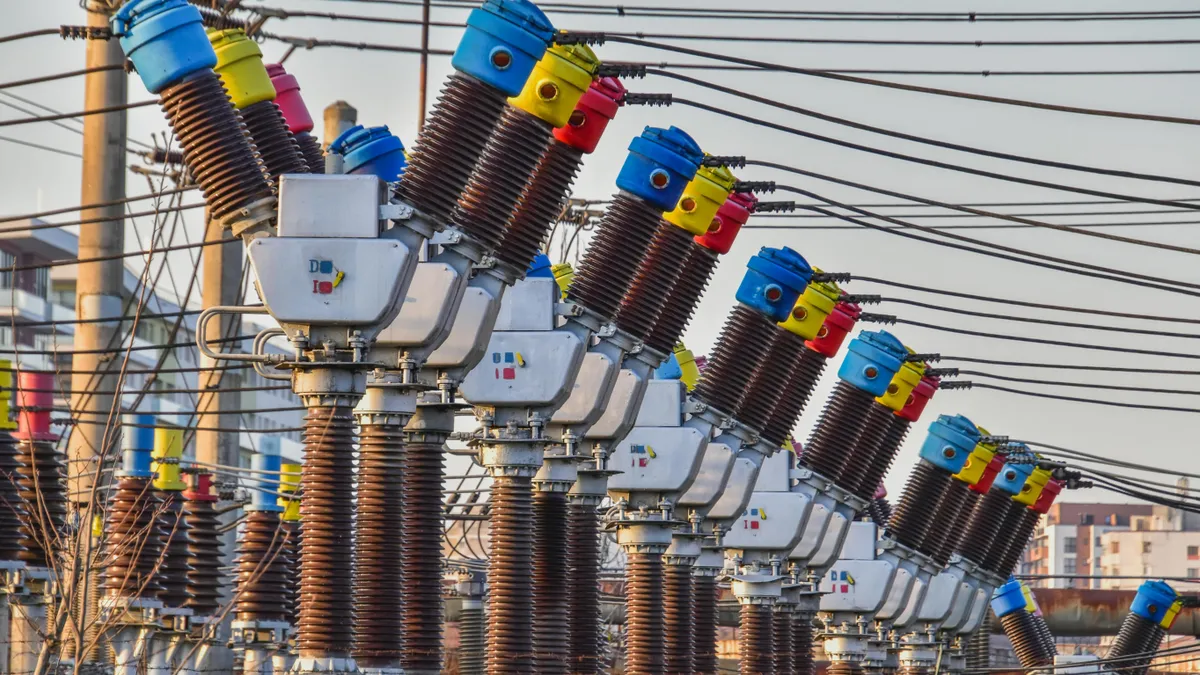Today’s power system is tasked with an unprecedented triple-challenge: reliably serving increasing demand while simultaneously reducing carbon emissions and keeping costs down. It is widely accepted that electrification and the proliferation of grid-edge distributed energy resources (DERs) will significantly strain the distribution grid if demand is not appropriately managed, and may require billions of dollars of capital investments into new distribution network capacity. Neither the speed nor affordability of our energy transition can afford that.
Left unmanaged, DERs can be a challenge to the distribution grid; managed well, they can also be the solution. When provided with adequate signals that convey the timing, location, and cost of local grid constraints, DERs can make informed operational decisions that help mitigate those constraints. Given this, utilities can start implementing dynamic distribution price signals at any stage of grid modernization, using the data they already have.
Previously we shared an example of how the UK’s Distribution Network Operators (DNOs) have implemented time-varying distribution network pricing that conveys how the cost of the distribution grid varies across the hours of the day. It does not, however, reflect how costs change across locations. We know that constraints on the local grid are incredibly locationally-specific. For example: one feeder might be overloaded at a given moment in time, while the adjacent feeder may have plenty of available capacity at that time. To convey the full nature of constraints on the distribution grid, distribution grid pricing must include a locational dimension.
For utilities to develop locationally-specific distribution signals, they must collect and analyze a substantial amount of data. Some utilities approach grid data collection as an ‘all or nothing’ undertaking, suggesting that data collection must occur at full scale (e.g., system-wide) before the data can inform business processes or use cases (e.g., dynamic pricing) — an expensive and lengthy approach to grid data collection.
Given the cost-sensitivity and time-sensitivity of our energy transition, waiting to implement dynamic distribution pricing until monitoring and analytics devices are deployed at scale is a risk we can’t afford to take. Luckily, thanks to recent advancements in AI and machine learning, software solutions have emerged that use predictive analytics to model system-wide network conditions using smaller grid data sets (like data collected from a handful of substations). Utilities can use these tools to start implementing dynamic distribution pricing pilots, to the immediate benefit of the grid.
Kraken recently collaborated with the Scottish DNO to launch a dynamic distribution grid tariff. Here are three learnings that could help inform how utilities start implementing dynamic grid pricing regimes of their own.
While a Geographical Information System (GIS) mapping of substations is useful, it is not required for a pilot or demonstration
To optimize DERs based on locational data, we need to know where DERs are located and how they map to the distribution grid. The more DERs that are clustered around a substation that is at risk of being overloaded, the more that optimization is needed and the steeper the price curve should be. To map the geographic distribution of DERs to specific distribution elements (like a substation), a DNO needs to be able to cross-reference the location of the DERs against the location of each distribution element. This can be done using anything from sophisticated mapping-enabled software platforms (e.g., DERMS) to less sophisticated approaches that manually match zip codes. The latter can serve as a low-cost solution deployed in the near-term until more robust locational data is available.
Solution providers can help develop synthetic price signals to optimize assets against by using one or two distribution-grid inputs
Data indicators can be used to assess when a grid asset is at risk of becoming constrained. Among others, these indicators include: loading, congestion, supply interruption, voltage levels, or power quality. The more indicators used to model and assess the risk of grid constraints, the more data (including hardware) needs to be collected — and the more complex the process to develop a signal will be. However, starting with a single grid indicator (such as active power) and combining it with some measure of cost data (such as the value of lost load) can be sufficient for an early dynamic distribution pricing trial.
Combining substation-level data with predictive modeling avoids the need for full-scale hardware deployment
In its pilot with the Scottish DNO, Kraken installed data collection hardware at a handful of bulk substations throughout the DNO’s territory. No hardware was deployed at secondary substations. Using historical and real-time telemetry from those substations, Kraken was able to develop a statistically-significant model of how load is dispatched across the distribution network. This resulted in lower costs while still receiving distribution-level benefits of DER optimization.
Distribution grid signals are necessary to unlock grid-edge flexibility
What if all the new residential DERs being deployed today could be orchestrated to serve the needs of the distribution grid, when and where they arise? Given their decentralized geographic distribution and their diverse operational profiles, grid-edge DERs are well-positioned to be deployed at the precise times and locations where distribution constraints arise — but only if they have the necessary signals to do so. Dynamic distribution price signals can translate the time- and location-specific constraints of the distribution grid into actionable signals for DERs to decide when, where, and how to operate. Without these signals, the largely-untapped distribution value of our demand-side resources will remain submerged. It’s time we unlock that value, for the benefit of the grid, its customers, and the climate.










